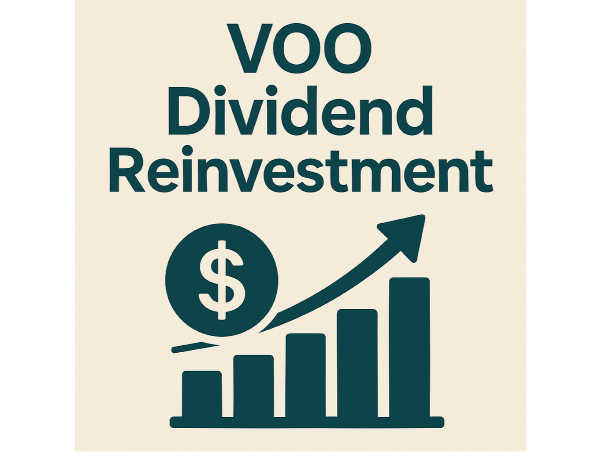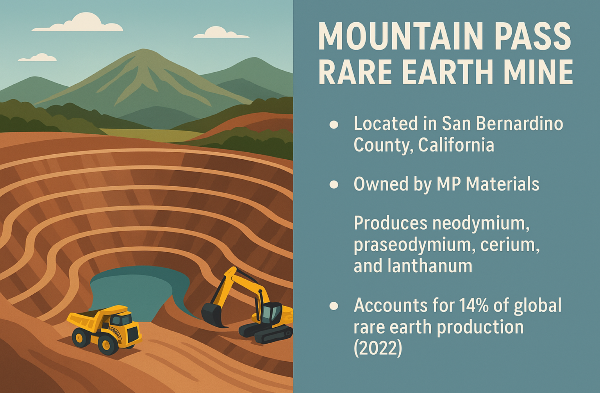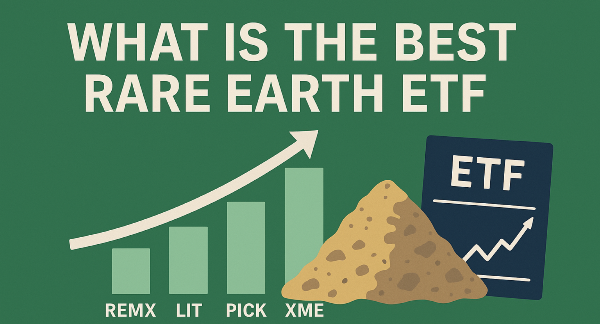Introduction
VOO, the Vanguard S&P 500 ETF, is one of the most widely held funds, offering investors exposure to the largest U.S. companies with a low-cost, passive investment strategy. As a dividend-paying ETF, VOO distributes earnings to shareholders, providing an opportunity for reinvestment to maximize long-term returns. Factors such as brokerage policies, tax implications, and market conditions influence whether dividends are automatically reinvested or received as cash. Exploring these elements helps investors optimize their portfolios and align their strategies with financial goals.
What Are Dividends?
Dividends are payments made by companies to their shareholders as a portion of their earnings. These distributions typically occur quarterly, though some companies may pay them annually or monthly. Dividends can be issued in cash, where investors receive direct payments, or as additional shares through stock dividends. The amount paid is determined by the company’s board of directors based on profitability and financial stability. Dividend income plays a crucial role in long-term investing, providing a steady cash flow that can be reinvested to compound returns.
Investors seeking passive income often favor dividend-paying stocks, as they offer stability even during market downturns. Dividend-paying stocks and ETFs provide investors with diversified exposure to income-generating assets. ETFs such as SCHD and VYM focus on high-dividend stocks, offering a convenient way to invest in a basket of companies with strong payout histories. Unlike individual stocks, dividend ETFs reduce risk by spreading investments across multiple companies.
Does VOO Pay Dividends?
VOO, the Vanguard S&P 500 ETF, distributes dividends to its shareholders as part of its passive investment strategy. These dividends are derived from the earnings of the 500 largest publicly traded U.S. companies included in the fund. Vanguard collects dividend payments from these companies and distributes them proportionally to VOO investors. The amount paid depends on the overall dividend yield of the S&P 500. VOO pays dividends on a quarterly basis, meaning investors receive distributions four times a year. The most recent dividend payment was $1.8121 per share, with an ex-dividend date of March 27, 2025, and a payout date of March 31, 2025.
This consistent schedule allows investors to plan their income streams and reinvest dividends efficiently. Historically, VOO’s dividend yield has remained around 1.28%, reflecting the broader market’s dividend trends. While this yield is lower than dividend-focused ETFs like SCHD, VOO provides steady income alongside capital appreciation. Over the years, VOO’s dividend payments have shown gradual growth, aligning with the increasing profitability of its underlying holdings.
Automatic Dividend Reinvestment: How It Works
Dividend reinvestment programs (DRIPs) allow investors to automatically reinvest their cash dividends into additional shares of the same stock or ETF. This strategy helps compound returns over time, as reinvested dividends generate more shares, which in turn produce additional dividends. DRIPs are commonly offered by brokerage firms and individual companies, enabling investors to accumulate fractional shares without incurring transaction fees. Some brokerages also offer commission-free reinvestment. Additionally, reinvested dividends are recorded as new tax lots.
There are key differences between manual and automatic dividend reinvestment options. Automatic reinvestment ensures that dividends are immediately reinvested without requiring investor action. Manual reinvestment, on the other hand, allows investors to decide how to allocate their dividends.
Does VOO Automatically Reinvest Dividends?
VOO does not automatically reinvest dividends by default, but investors can opt into a dividend reinvestment program (DRIP) through their brokerage. Vanguard distributes dividends quarterly, and shareholders receive these payments in cash unless they have set up reinvestment preferences. The ability to reinvest dividends depends on the brokerage’s policies, as some platforms offer automatic reinvestment options while others require manual selection. Brokerages play a crucial role in determining reinvestment eligibility for VOO shareholders.
Most major brokerage firms, including Fidelity and Charles Schwab, provide DRIP enrollment, allowing investors to reinvest dividends into additional shares without incurring transaction fees. Setting up automatic dividend reinvestment for VOO is a straightforward process. Investors should also consider tax implications, as reinvested dividends may still be subject to taxation depending on their account type and jurisdiction.
Benefits of Reinvesting Dividends
Reinvesting dividends allows investors to take advantage of compounding returns, significantly enhancing portfolio growth over time. When dividends are reinvested, they purchase additional shares, which in turn generate more dividends in future cycles. This process accelerates wealth accumulation. By automatically reinvesting dividends, investors avoid the temptation to spend payouts, ensuring that their capital remains invested and continues to grow.
Historical data indicates that portfolios utilizing dividend reinvestment outperform those that rely solely on price appreciation, as reinvested dividends provide an additional source of compounding gains. Tax considerations play a crucial role in dividend reinvestment strategies. While reinvested dividends are still subject to taxation, certain accounts, such as Roth IRAs, allow investors to defer or eliminate tax liabilities on reinvested earnings.
Drawbacks of Dividend Reinvestment
Dividend reinvestment can create liquidity concerns for investors who rely on cash flow from their portfolios. When dividends are automatically reinvested, they are converted into additional shares rather than being received as cash. This can be problematic for investors who depend on dividend income for expenses or financial obligations. Tax implications are another drawback of dividend reinvestment, as reinvested dividends are still subject to taxation.
In taxable accounts, investors must pay taxes on dividends even if they are reinvested, which can create unexpected tax liabilities. Qualified dividends may receive favorable tax treatment, but non-qualified dividends are taxed at ordinary income rates. Additionally, reinvested dividends create new tax lots, requiring investors to track cost basis for future capital gains calculations. Market timing risks can also affect dividend reinvestment strategies.
How to Set Up Dividend Reinvestment for VOO
Setting up dividend reinvestment for VOO involves enrolling in a Dividend Reinvestment Plan (DRIP) through a brokerage account. Investors can access their brokerage platform and navigate to the dividend preferences section, where they can opt into automatic reinvestment.
Most brokerages offer commission-free DRIP enrollment, ensuring that dividends are reinvested without additional costs. Once enrolled, future dividend payments are used to purchase additional shares of VOO, allowing investors to compound returns over time. Some brokerages also support fractional share reinvestment.
Additionally, tax considerations play a role in reinvestment decisions, as reinvested dividends in taxable accounts may still incur tax liabilities. Monitoring reinvested dividends and portfolio performance is essential for maintaining investment efficiency. Investors should track dividend payments, reinvestment transactions, and overall portfolio growth through their brokerage account. Regular reviews help assess whether reinvestment aligns with financial goals and market conditions.
Alternatives to Automatic Dividend Reinvestment
Investors who prefer flexibility can manually invest dividends into other assets rather than automatically reinvesting them. This approach allows for strategic allocation based on market conditions, personal financial goals, and portfolio diversification needs. Using dividend income for expenses or portfolio rebalancing is another alternative to automatic reinvestment.
Some investors rely on dividend payments as a source of passive income, using them to cover living expenses or reinvest selectively when market conditions are favorable. Additionally, dividends can be used to rebalance a portfolio by purchasing undervalued assets or adjusting allocations to maintain an optimal risk-return profile. Comparing reinvestment options across different ETFs helps investors determine the most effective strategy for their portfolios.
Conclusion
VOO offers investors a reliable way to gain exposure to the S&P 500 while benefiting from dividend payments that can be reinvested for long-term growth. While VOO does not automatically reinvest dividends, brokerage firms provide Dividend Reinvestment Plans (DRIPs) that allow investors to reinvest earnings seamlessly.
Understanding the benefits and drawbacks of reinvestment, including tax implications and liquidity concerns, helps investors make informed decisions based on their financial goals. Whether opting for automatic reinvestment, manually allocating dividends, or using payouts for portfolio adjustments, investors can tailor their strategies to maximize returns while ensuring stability.




























Introduction
VOO, the Vanguard S&P 500 ETF, is one of the most widely held funds, offering investors exposure to the largest U.S. companies with a low-cost, passive investment strategy. As a dividend-paying ETF, VOO distributes earnings to shareholders, providing an opportunity for reinvestment to maximize long-term returns. Factors such as brokerage policies, tax implications, and market conditions influence whether dividends are automatically reinvested or received as cash. Exploring these elements helps investors optimize their portfolios and align their strategies with financial goals.
What Are Dividends?
Dividends are payments made by companies to their shareholders as a portion of their earnings. These distributions typically occur quarterly, though some companies may pay them annually or monthly. Dividends can be issued in cash, where investors receive direct payments, or as additional shares through stock dividends. The amount paid is determined by the company’s board of directors based on profitability and financial stability. Dividend income plays a crucial role in long-term investing, providing a steady cash flow that can be reinvested to compound returns.
Investors seeking passive income often favor dividend-paying stocks, as they offer stability even during market downturns. Dividend-paying stocks and ETFs provide investors with diversified exposure to income-generating assets. ETFs such as SCHD and VYM focus on high-dividend stocks, offering a convenient way to invest in a basket of companies with strong payout histories. Unlike individual stocks, dividend ETFs reduce risk by spreading investments across multiple companies.
Does VOO Pay Dividends?
VOO, the Vanguard S&P 500 ETF, distributes dividends to its shareholders as part of its passive investment strategy. These dividends are derived from the earnings of the 500 largest publicly traded U.S. companies included in the fund. Vanguard collects dividend payments from these companies and distributes them proportionally to VOO investors. The amount paid depends on the overall dividend yield of the S&P 500. VOO pays dividends on a quarterly basis, meaning investors receive distributions four times a year. The most recent dividend payment was $1.8121 per share, with an ex-dividend date of March 27, 2025, and a payout date of March 31, 2025.
This consistent schedule allows investors to plan their income streams and reinvest dividends efficiently. Historically, VOO’s dividend yield has remained around 1.28%, reflecting the broader market’s dividend trends. While this yield is lower than dividend-focused ETFs like SCHD, VOO provides steady income alongside capital appreciation. Over the years, VOO’s dividend payments have shown gradual growth, aligning with the increasing profitability of its underlying holdings.
Automatic Dividend Reinvestment: How It Works
Dividend reinvestment programs (DRIPs) allow investors to automatically reinvest their cash dividends into additional shares of the same stock or ETF. This strategy helps compound returns over time, as reinvested dividends generate more shares, which in turn produce additional dividends. DRIPs are commonly offered by brokerage firms and individual companies, enabling investors to accumulate fractional shares without incurring transaction fees. Some brokerages also offer commission-free reinvestment. Additionally, reinvested dividends are recorded as new tax lots.
There are key differences between manual and automatic dividend reinvestment options. Automatic reinvestment ensures that dividends are immediately reinvested without requiring investor action. Manual reinvestment, on the other hand, allows investors to decide how to allocate their dividends.
Does VOO Automatically Reinvest Dividends?
VOO does not automatically reinvest dividends by default, but investors can opt into a dividend reinvestment program (DRIP) through their brokerage. Vanguard distributes dividends quarterly, and shareholders receive these payments in cash unless they have set up reinvestment preferences. The ability to reinvest dividends depends on the brokerage’s policies, as some platforms offer automatic reinvestment options while others require manual selection. Brokerages play a crucial role in determining reinvestment eligibility for VOO shareholders.
Most major brokerage firms, including Fidelity and Charles Schwab, provide DRIP enrollment, allowing investors to reinvest dividends into additional shares without incurring transaction fees. Setting up automatic dividend reinvestment for VOO is a straightforward process. Investors should also consider tax implications, as reinvested dividends may still be subject to taxation depending on their account type and jurisdiction.
Benefits of Reinvesting Dividends
Reinvesting dividends allows investors to take advantage of compounding returns, significantly enhancing portfolio growth over time. When dividends are reinvested, they purchase additional shares, which in turn generate more dividends in future cycles. This process accelerates wealth accumulation. By automatically reinvesting dividends, investors avoid the temptation to spend payouts, ensuring that their capital remains invested and continues to grow.
Historical data indicates that portfolios utilizing dividend reinvestment outperform those that rely solely on price appreciation, as reinvested dividends provide an additional source of compounding gains. Tax considerations play a crucial role in dividend reinvestment strategies. While reinvested dividends are still subject to taxation, certain accounts, such as Roth IRAs, allow investors to defer or eliminate tax liabilities on reinvested earnings.
Drawbacks of Dividend Reinvestment
Dividend reinvestment can create liquidity concerns for investors who rely on cash flow from their portfolios. When dividends are automatically reinvested, they are converted into additional shares rather than being received as cash. This can be problematic for investors who depend on dividend income for expenses or financial obligations. Tax implications are another drawback of dividend reinvestment, as reinvested dividends are still subject to taxation.
In taxable accounts, investors must pay taxes on dividends even if they are reinvested, which can create unexpected tax liabilities. Qualified dividends may receive favorable tax treatment, but non-qualified dividends are taxed at ordinary income rates. Additionally, reinvested dividends create new tax lots, requiring investors to track cost basis for future capital gains calculations. Market timing risks can also affect dividend reinvestment strategies.
How to Set Up Dividend Reinvestment for VOO
Setting up dividend reinvestment for VOO involves enrolling in a Dividend Reinvestment Plan (DRIP) through a brokerage account. Investors can access their brokerage platform and navigate to the dividend preferences section, where they can opt into automatic reinvestment.
Most brokerages offer commission-free DRIP enrollment, ensuring that dividends are reinvested without additional costs. Once enrolled, future dividend payments are used to purchase additional shares of VOO, allowing investors to compound returns over time. Some brokerages also support fractional share reinvestment.
Additionally, tax considerations play a role in reinvestment decisions, as reinvested dividends in taxable accounts may still incur tax liabilities. Monitoring reinvested dividends and portfolio performance is essential for maintaining investment efficiency. Investors should track dividend payments, reinvestment transactions, and overall portfolio growth through their brokerage account. Regular reviews help assess whether reinvestment aligns with financial goals and market conditions.
Alternatives to Automatic Dividend Reinvestment
Investors who prefer flexibility can manually invest dividends into other assets rather than automatically reinvesting them. This approach allows for strategic allocation based on market conditions, personal financial goals, and portfolio diversification needs. Using dividend income for expenses or portfolio rebalancing is another alternative to automatic reinvestment.
Some investors rely on dividend payments as a source of passive income, using them to cover living expenses or reinvest selectively when market conditions are favorable. Additionally, dividends can be used to rebalance a portfolio by purchasing undervalued assets or adjusting allocations to maintain an optimal risk-return profile. Comparing reinvestment options across different ETFs helps investors determine the most effective strategy for their portfolios.
Conclusion
VOO offers investors a reliable way to gain exposure to the S&P 500 while benefiting from dividend payments that can be reinvested for long-term growth. While VOO does not automatically reinvest dividends, brokerage firms provide Dividend Reinvestment Plans (DRIPs) that allow investors to reinvest earnings seamlessly.
Understanding the benefits and drawbacks of reinvestment, including tax implications and liquidity concerns, helps investors make informed decisions based on their financial goals. Whether opting for automatic reinvestment, manually allocating dividends, or using payouts for portfolio adjustments, investors can tailor their strategies to maximize returns while ensuring stability.